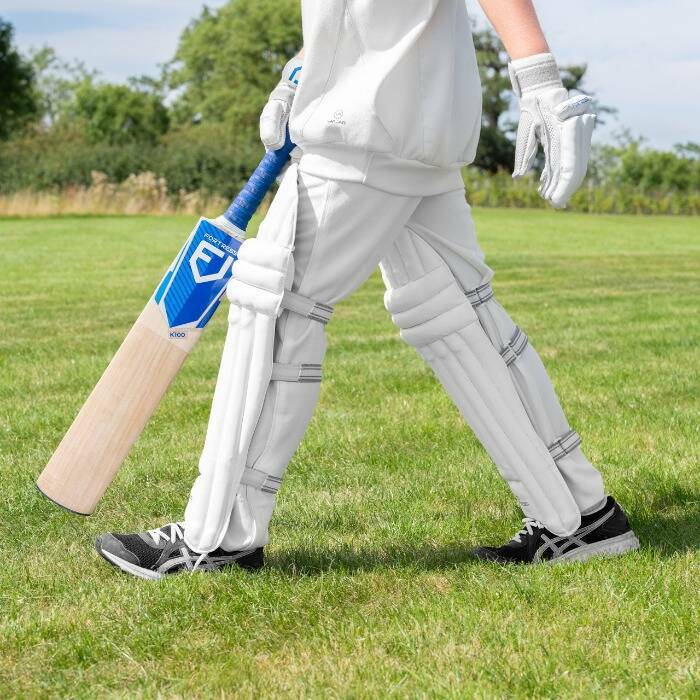Guide to Choosing Cricket Fielding Pads: What Factors to Consider?
Playing any sport means going through a possible risk of injury. Although cricket is considered to be a somewhat safer sport than other sports, it can still pose a high risk of injury, and the speed at which the ball is thrown can do some serious harm.
Therefore, protective gear like pads in cricket is essential. However, before you buy cricket fielding pads, there are several factors to consider to ensure you’re making the right choice.
Contents
Importance of Batting Pads in Cricket

What is the meaning of pads in cricket? Their primary role is offering protection from injury. They are vital gear designed to protect the players’ legs from the fast-moving cricket balls. The knees and thighs are the two body areas exposed to the highest risk of injury. Thus, cricket fielding pads are a must when on the court.
Besides the protective factor of the pads, they also serve to allow players to focus on their game, instead of fearing a possible injury. Knowing that they are well-protected boosts players’ confidence and allows them to move forward into the game more aggressively and confidently which can enhance their optimal performance.
Another important aspect of the pads is that they provide players with comfort and mobility while ensuring optimal protection. After all, players should feel comfortable in their movements, especially during swinging with the cricket bats, which is essential for effective batting techniques.
Things to Consider When Selecting Cricket Pads
What’s Your Playing Position?
As it is with any sport, there are several different player positions and each player has a crucial position that contributes to the overall game’s success. Here is how your playing position in the team can determine the selection of pads:
- Opening Batsmen – they are the ones who typically face the new ball against fast bowlers. That means that they have a higher risk of possible injuries. This position requires sturdy pads with thicker padding on the front and the sides.
- Middle Order Batsman – their position requires interacting with fast bowlers and spinners. This means that they need better mobility all around while wearing their protective gear. In this case, opt for pads with moderate padding to allow ease of movement, while still providing you with adequate protection.
- Lower-order batsmen, including all all-rounders, would better suit lightweight pads to ensure movement without any restriction as they often need to run between wickets and the field.
- Wicketkeepers will need pads that provide both protection and ease of movement. While lighter-weight pads are more suitable for this role, the pads still need to offer optimal protection. Look for lightweight designs that have extra padding around the knees and lower thighs.
- Fielders and all-rounders – if this is your role in the team, you will benefit from pads that offer a balance between protection and flexibility. You should be able to move and bat comfortably while staying protected from injuries.
Size and Fit

Size plays a huge role in the level of protection that pads offer. If they’re too small or too big for you, then you’re not getting adequate protection. To find the right size for you, there are several categories of pads:
- Adult/Senior
- Large Adult
- Small Adult
- Youth Pads
- And Junior Pads
Each category provides size fitting for a specific age group. Regardless of the category, to make sure that the pads fit you well, this is how to check. When you put on the pad, check if the knee sits right on the knee roll part of the pad. However, this is mostly for adult and senior pads.
If you’re a junior, the knee should sit somewhere at the bottom of the knee roll. This is so that as children grow, they can quickly outgrow the pads, and by performing this checking method, you ensure that the pad offers enough growing room.
Protection Level
The level of protection will oftentimes depend on the design, material and construction of the fielding pads. For instance, pads with high protection levels typically feature multi-layered foam padding, reinforced plastic inserts and ergonomic designs. It’s important to consider the intensity of the play and your role in the game to help you determine the level of protection you need.
Another factor that plays a role in the selection is whether you’re a casual/recreational player or a professional. For instance, casual players do not require the same level of protection as professionals. Instead, you can opt for entry-level grade pads that can still provide adequate protection while enjoying the occasional involvement in cricket.
Durability
Durability is another essential factor, as the pads should be able to withstand the rigorous demands of the game. Highly durable designs are resistant to wear and tear, and their design provides impact reduction.
Pads with reinforced knee padding for shock dissipation, reinforced high-density foam, reinforced plastics, made from durable fabrics offer better longevity and reliability.

















